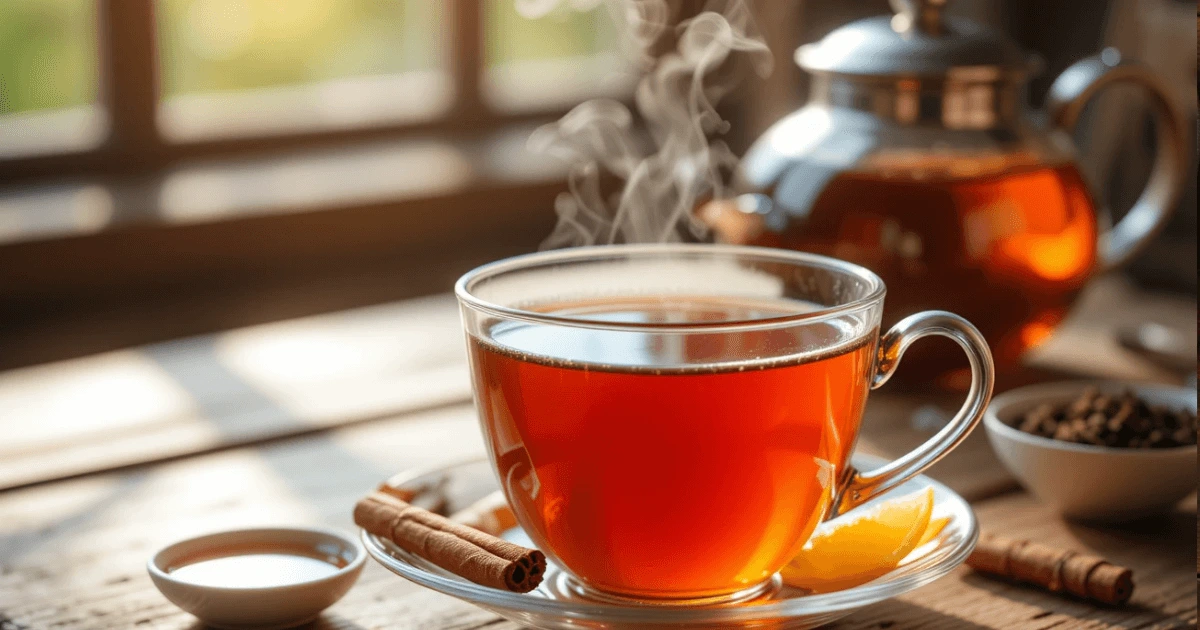Introduction
Do you find your English breakfast tea tasting too bitter, bland, or just not as enjoyable as you’d like? You’re not alone. Many people brew their tea without realizing that small adjustments can make a huge difference in flavor. The good news is that you don’t need to be a tea connoisseur to enhance your experience. With just a few simple tweaks, you can transform your daily cup into something rich, smooth, and perfectly balanced.
In this guide, you’ll discover four easy steps to improve the taste of your English breakfast tea, ensuring that every sip is as satisfying as possible. Whether you’re a seasoned tea drinker or just starting, these tips will help you brew the perfect cup.
Table Of Contents
Step 1 – Choose High-Quality English Breakfast Tea
Loose Leaf vs. Tea Bags
The quality of your tea plays a significant role in its taste. While tea bags are convenient, they often contain lower-quality tea leaves, which can lead to a dull or bitter taste. Loose-leaf tea, on the other hand, offers a fresher, richer flavor profile.
- Loose-leaf tea: Contains whole or large tea leaves that retain their essential oils and aromas.
- Tea bags: Often contain broken leaves and tea dust, which can lead to over-extraction and bitterness.
How to Identify Quality Tea
When selecting English breakfast tea, keep the following in mind:
- Look for whole leaves: Higher-quality teas have larger, unbroken leaves.
- Check the aroma: Fresh tea should have a robust, slightly malty scent.
- Choose reputable brands: Brands known for high-quality tea include Twinings, Yorkshire Tea, and Harney & Sons.
- Opt for organic: Organic tea is free from pesticides and artificial flavors, offering a purer taste.
Step 2 – Use the Right Water and Temperature
Why Water Quality Matters
Your tea is 90% water, so using the right kind of water can make or break its flavor. Avoid tap water that contains chlorine or other chemicals, as these can interfere with the taste. Instead, use:
- Filtered water: Removes impurities while maintaining essential minerals.
- Spring water: Provides a clean, natural taste without additives.
The Perfect Temperature for Brewing
Boiling water isn’t always ideal for tea. If the water is too hot, it can scorch the leaves, leading to a bitter brew. Here’s the best approach:
- Ideal temperature: 90-100°C (194-212°F)
- Tip: Bring water to a boil, then let it sit for 30 seconds before pouring over the tea.
Step 3 – Master the Brewing Time
How Long Should You Steep?
Steeping your tea for the right amount of time ensures a well-balanced flavor. Oversteeping extracts too many tannins, making your tea bitter, while under-steeping results in a weak taste.
- Loose leaf tea: 3-5 minutes
- Tea bags: 2-4 minutes
- Tip: Use a timer to avoid over-extraction.
Tea Brewing Time Table
| Type of Tea | Steeping Time | Temperature |
|---|---|---|
| Loose Leaf | 3-5 minutes | 90-100°C (194-212°F) |
| Tea Bags | 2-4 minutes | 90-100°C (194-212°F) |
Step 4 – Enhance Flavor Naturally
Best Additives for a Richer Taste
Adding a few simple ingredients can elevate the taste of your tea. Here are some great options:
- Milk: Adds creaminess and smooths out bitterness.
- Honey: Provides a natural sweetness without overpowering the tea.
- Lemon: Adds a refreshing citrusy note.
- Cinnamon: Enhances warmth and aroma.
- Vanilla: Adds a subtle sweetness and depth.
Recipe for a Perfect English Breakfast Tea Latte
Ingredients:
| Ingredient | Quantity |
|---|---|
| English breakfast tea (loose leaf) | 2 g |
| Water | 240 g |
| Milk | 120 g |
| Honey | 7 g |
| Cinnamon | 0.5 g |
Instructions:
- Brew the tea using filtered water at 90-100°C.
- Heat the milk and froth it (optional).
- Pour the brewed tea into a cup and add the frothed milk.
- Stir in honey and cinnamon, then enjoy!
Frequently Asked Questions (FAQ)
Why does my English breakfast tea taste bitter?
Bitter tea is usually caused by oversteeping, using boiling water, or low-quality tea. Stick to the recommended steeping time and use fresh, high-quality leaves.
What’s the best milk for English breakfast tea?
Whole milk provides a rich, creamy texture, but dairy-free alternatives like oat or almond milk work well too.
Can I drink English breakfast tea without milk?
Absolutely! Many people enjoy it plain to savor its natural bold, malty flavor.
Is English breakfast tea stronger than other black teas?
Yes, it has a full-bodied flavor, making it stronger than lighter black teas like Darjeeling but milder than Assam tea.
Conclusion
By choosing high-quality tea, using the right water, mastering the steeping process, and adding natural flavor enhancers, you can elevate your English breakfast tea experience. Experiment with different techniques to find your perfect cup.
Try these steps today and let us know in the comments how they worked for you! Happy brewing! 😊


1 réflexion au sujet de « English Breakfast Tea: 4 Easy Steps to Make It Taste Better »
Les commentaires sont fermés.